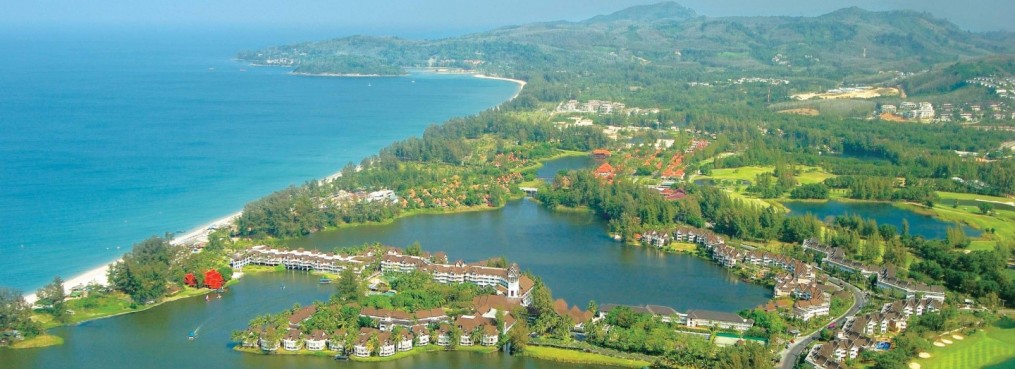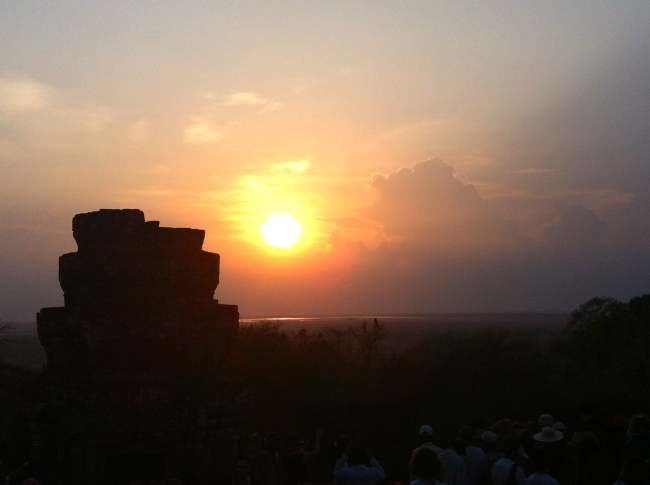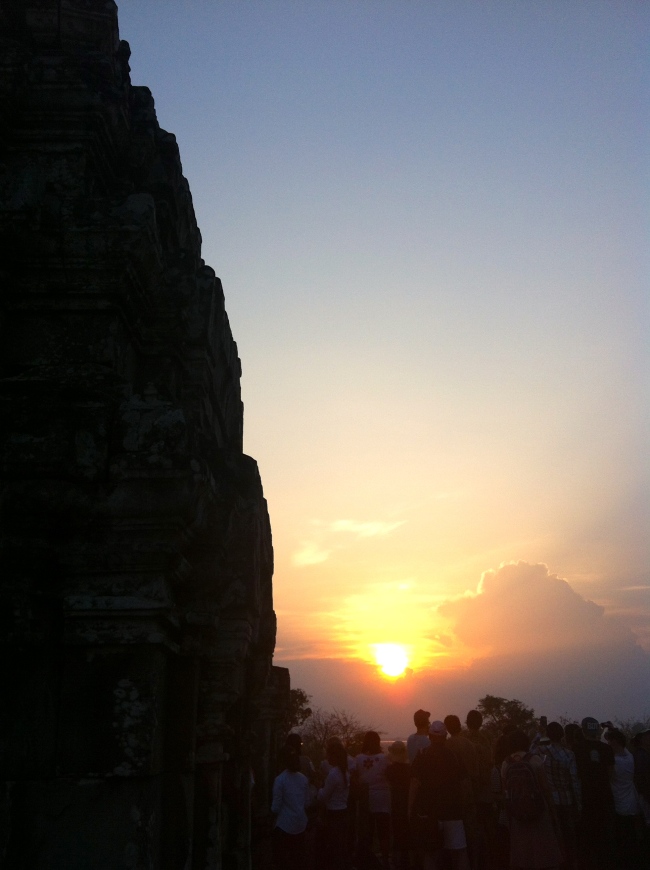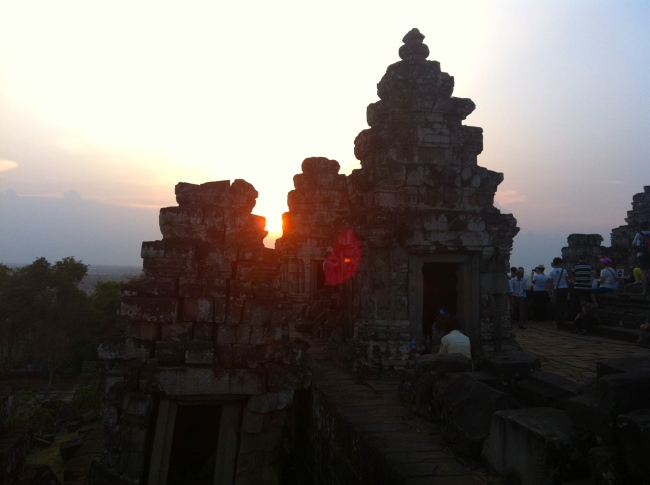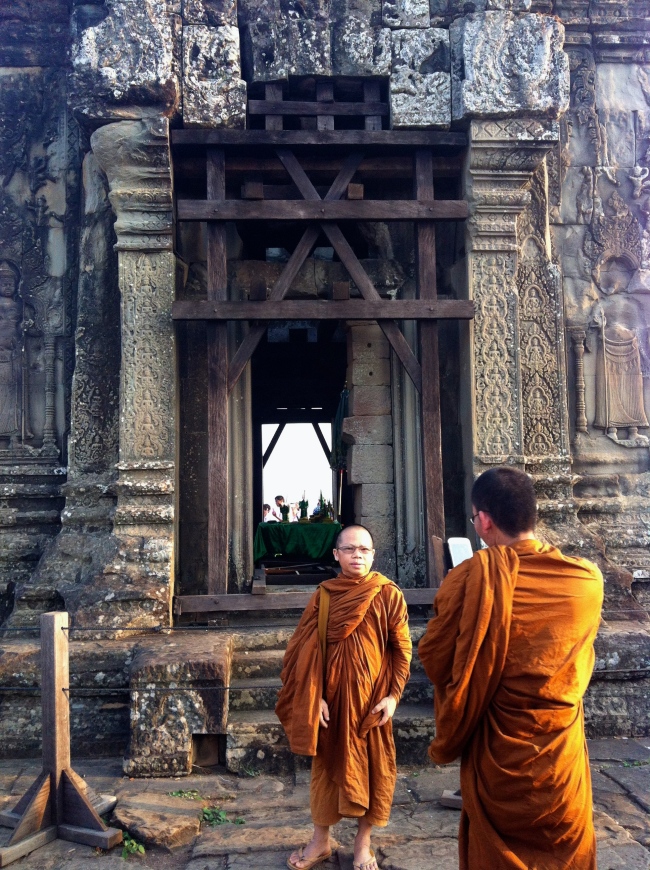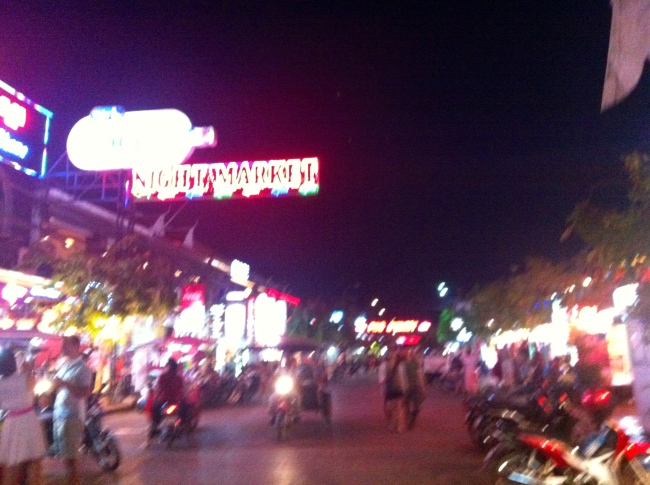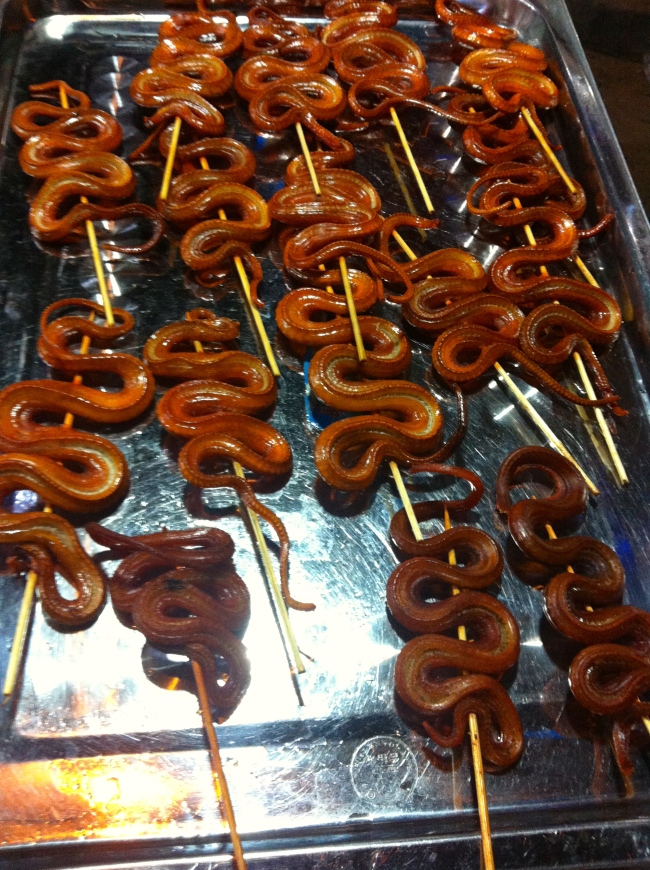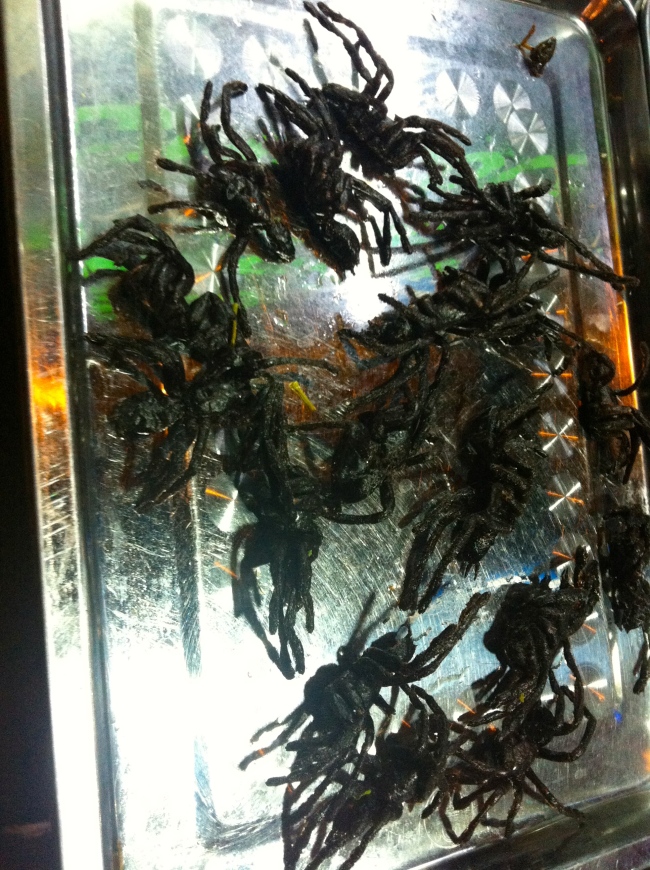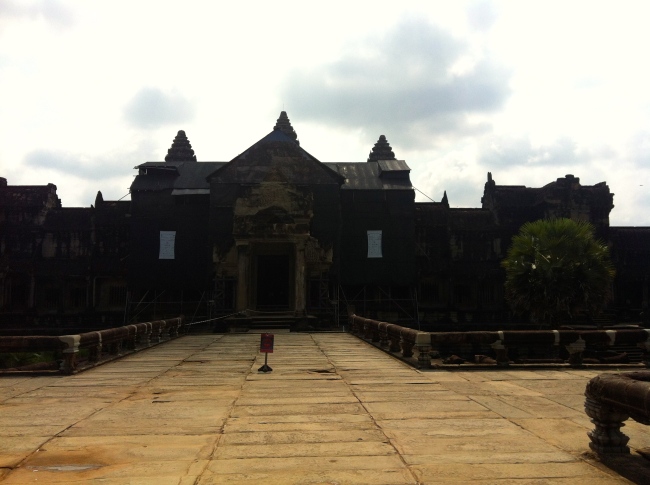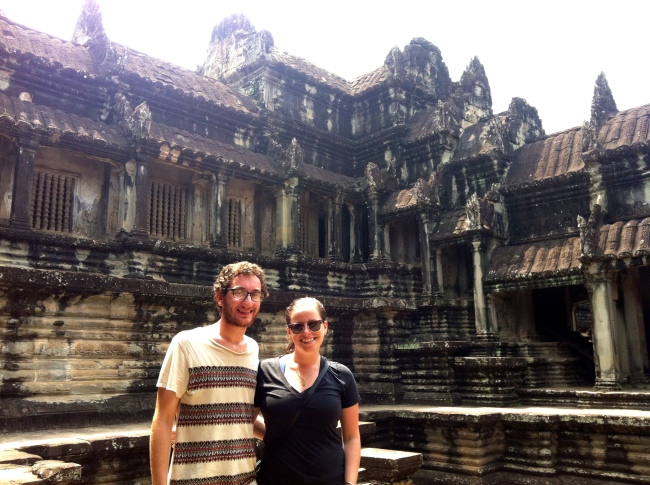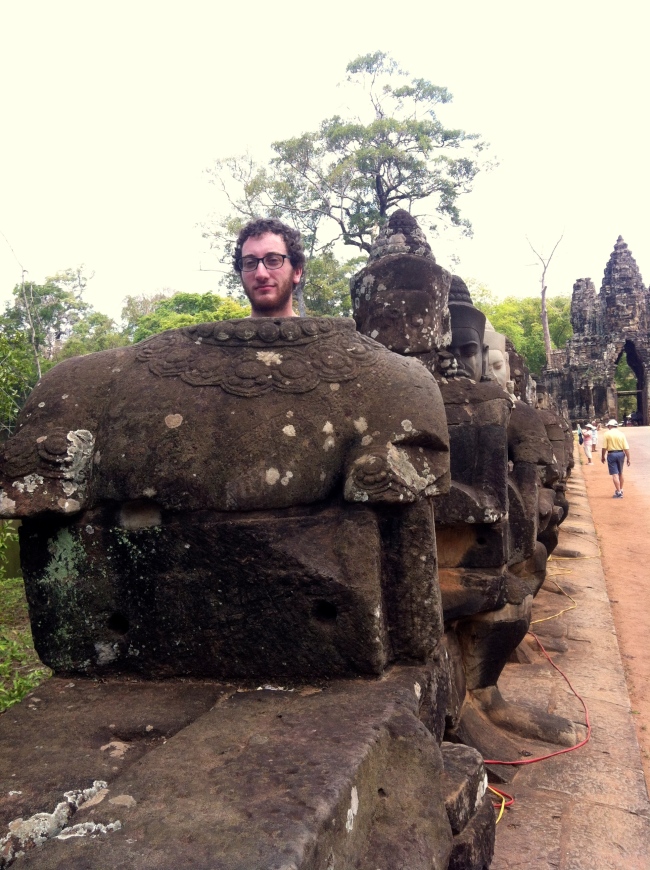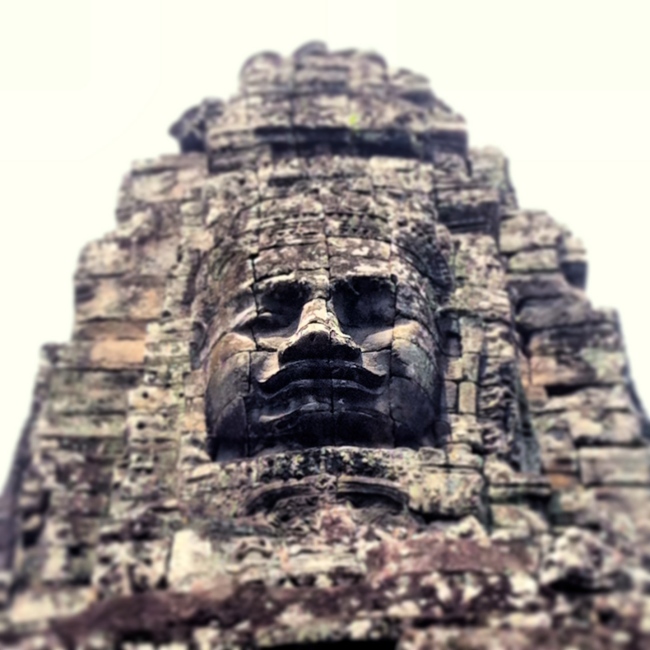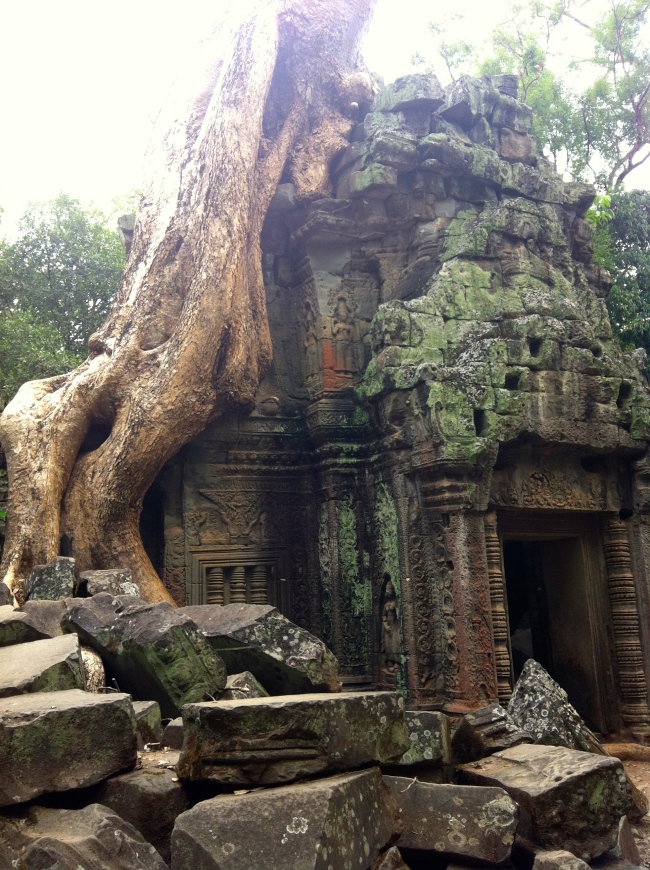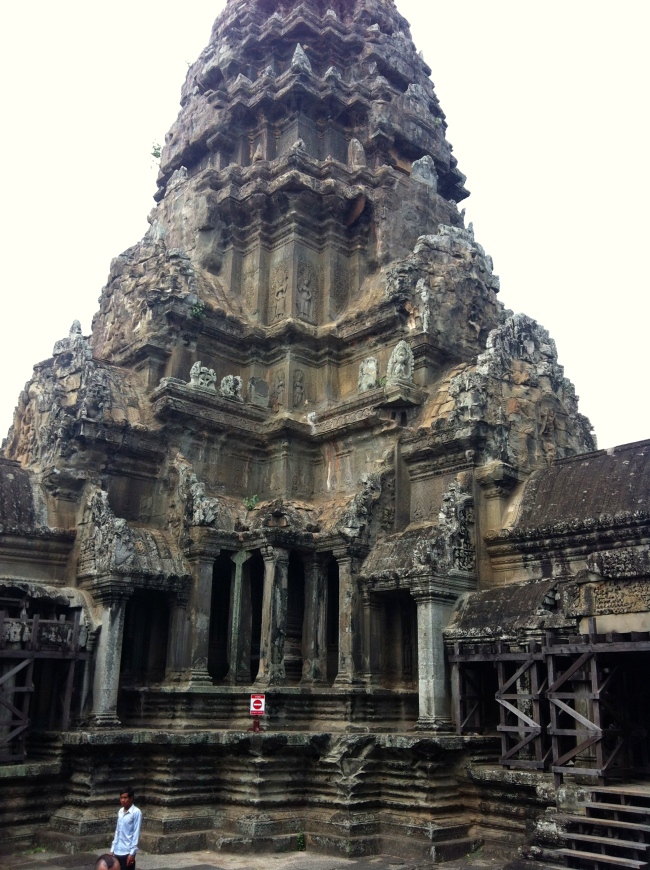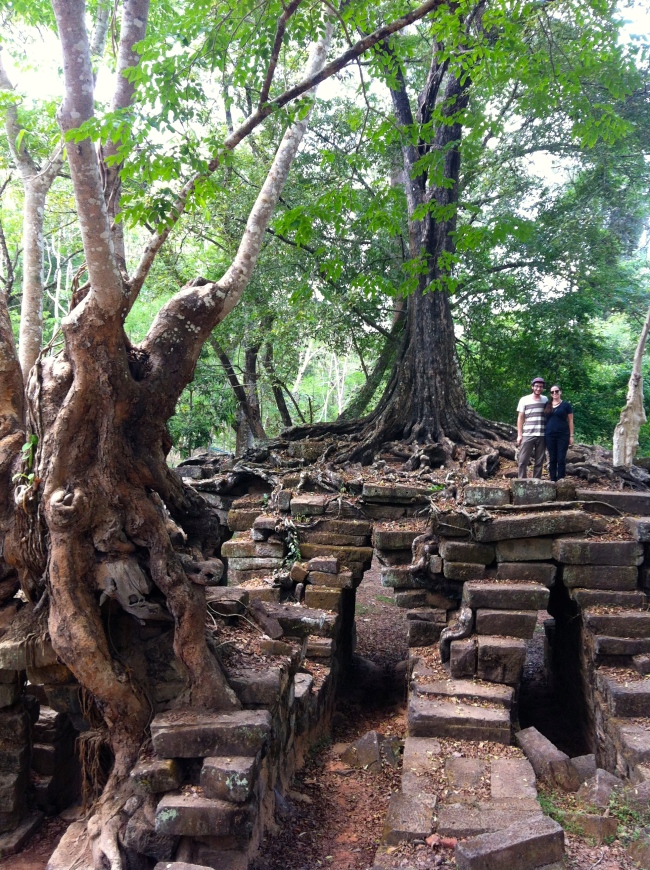Siem Reap, situated in the northwestern part of Cambodia is most well known for its proximity to Angkor Wat. Angkor Wat being the largest religious monument in the world (bucket list check off!) sees thousands and thousands of tourists a day. Siem Reap boasts colonial and Chinese style architectures, delicious Khmer food, a strong nightlife and more handicraft stores than you can count.
We arrived in Siem Reap after a cramped mini van ride from Phnom Penh and after a quick shower, we went to Angkor Wat for sunset. We are so thankful that our friend Adam, who has been to Angkor Wat a few times and knows his way around basically every country we’ve asked for advice on, let us in on the Angkor Wat ticket secret. And now I’ll tell you! It’s $20 a day to enter the complex, which is a great price because it is 203 acres of beautiful Angkor architecture and the occasional monkey. Now for the trick- if you want to go to Angkor Wat for just one day and see the big sites (our plan) you can go the day BEFORE you wish to spend the day there, come at 4:30 PM and buy a ticket. At 4:30, the tickets sold are written as for the next day but you are allowed to go into the park right then until it closes after sunset. So thanks to Adam- we saw the sunset at one of the temples the first night and then were still able to spend the whole next day there, too.
Then, we went to the downtown area of Siem Reap – known as “Pub Street” and had dinner. We really enjoyed Khmer food- a lot of spices, creamy curries, peppers, lemongrass, turmeric, garlic, etc. My favorite dish was Amok Chicken – a dish with a creamy coconut curry mixed with vegetables, chicken, pounded shallots, lemongrass, garlic and kaffir lime. Delicious and most likely impossible for me to replicate.
We did not eat the fried snake or tarantula nor did we pay the 50 cents we were told we must in order to take the picture. I’m rather sneaky..
The next day we set out early to Angkor Wat with a plan to hit up just a few of the major sites, as it was around 100 degrees and so crowded. A picture says a lot more than I can, so here are the photos of the most iconic temples at Angkor Wat: Angkor Wat itself, The Bayon, Ta Prohm and Banteay Kdei.
There are plenty more up on my Facebook page, so I’ll try not to seem too repetitive now. They are all so beautiful and incredibly old- telling stories of the Angkorian people, their beliefs, and bringing that into modern day Cambodian traditions as well.
Our time in Siem Reap was short but we really enjoyed it (except for a day the whole city lost power and it was 100 F outside….). We loved to see the temples and I love walking around old market places. I may have gotten a few gifts made out of recycled bullets and UXO’s found after the war, as well. Now, back to Thailand to celebrate the Songkran festival (Thai New Year) in Bangkok! Check back again soon for the update of how our celebrations went, and please accept my apologies as I am still playing catch up (we are on an island and pretending we have no internet access feels great for the mind). See you all in 5 weeks now!
